Calcivirosis (calicivirus or calcivirus) – a disease in cats, caused by a virus and localized in the respiratory tract. The spread of the virus contributes to the crowded keeping of animals in shelters and nurseries. Mostly young animals are ill in up to one and a half months. Pathogen transmission contributes to lack of proper disinfection in places of detention (cells and boxes), which are regularly replenished with bowel movements contained animals.
Content
- 1 Causes of Calcivirosis in Cats
- 2 Symptoms
- 3 What is a virus dangerous?
- 4 Diagnosis of calcivirosis
- 5 Treatment
- 6 Possible complications
- 7 Disease Prevention
Causes of Calcivirosis in Cats
Contents

The virus develops in almost any environment.
The causative agent of the disease is the Feline virus spherical calicivirus with a diameter of not more than 40 nanometers. He is not afraid of elevated temperatures, but humid environment is a favorable factor for conservation vitality. So, during dry summer weather, he remains active for three days, while in slushy off-season this period increases four times and is already 1.5–2 weeks.
Standard disinfectants are not able to cause him harm, therefore, there is always a risk of pathogen transfer from rooms where the sick animal is kept.
Maximum fixed shelf life of infectious The hazard is 18 days. Therefore, after the death of a pet from calcivirosis should wait three weeks before starting new kitten.
Symptoms
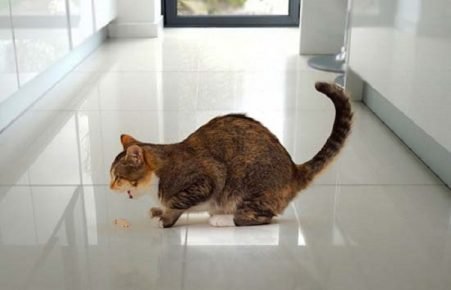
Vomiting in cats is a symptom of many diseases, not only calicivirus
Virus transmission is possible in several ways:
- Direct contact with carriers. Often in the absence of visible manifestations, the owners are not aware of the infection of the pet. Moving him in public transport, leaving in a zoo hotel or giving for binding to another family, they thereby facilitate the transfer other feline virus.
- Contact with a sick animal. In the initial stages of clinical the picture is not so pronounced, however, along with a sneezing sick cat transfers active viral to the mucosa of a neighboring animal instances.
- In crowded places (shelters and nurseries) through common trays and bowls of food and water. In such conditions, one sick kitten able to infect all guests.
Diagnose feline disease in the initial stages is quite difficult, since the clinical the picture is typical for a variety of conditions (including common poisoning when eating mice, unusual food, disinfectants, etc.):
- depressed state;
- refusal of food;
- discharge from the nose and eyes;
- temperature rise;
- indomitable or single vomiting.
The appearance of ulcers in the oral cavity and in the nose – more characteristic sign. However, with single manifestations can put rhinotracheitis – a disease with less danger. At cat develops further development of viral infection when breathing and walking, pneumonia and arthritis develop.
With the first symptoms of calcivirosis in a cat, it is necessary immediately start treatment.
What is dangerous virus
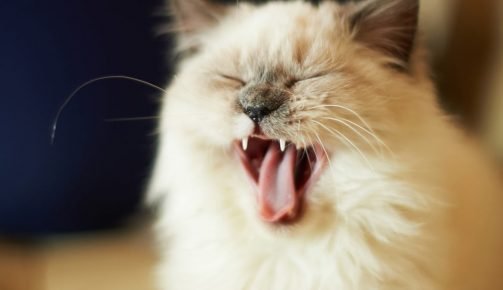
Due to the virus entering the cat’s upper respiratory tract, she sneezes often
This is a species-specific virus, therefore, for people of dogs and small rodents, it is not dangerous. However all they can become his carriers, bringing him with the usual street dirt on shoes or paws if they visit the place of detention sick animal or virus carrier.
Once in the cat’s upper respiratory tract, the virus causes:
- sneezing
- pulmonary edema;
- wheezing in the chest area;
- shortness of breath
- pneumonia
- bronchitis.
Without timely treatment, it spreads to other organs. and the system and in such an animal the face swells, the hair falls out, claudication, conjunctivitis is observed, aggression rises.
Diagnosis of calcivirosis
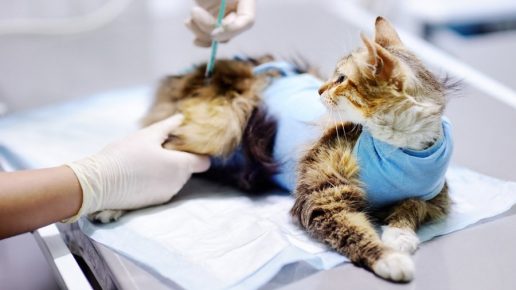
the analysis is carried out several times and after the end of the course of treatment, to exclude carriage and the transition of the disease into a chronic form
The most reliable diagnostic option is PCR analysis, which allows you to identify viral DNA in the genome of home pet. However, if the first visit to the laboratory was received a negative answer, then this is not an occasion to the owner calm down. As a rule, after a few days, the analysis is repeated: in In most cases, the answer is yes. Only if not opportunities to carry out PCR, diagnostics are carried out on the basis of general clinical picture. But in this case, the risk of making a mistake is very high: the doctor may conclude that there is a milder disease with similar symptoms.
Treatment
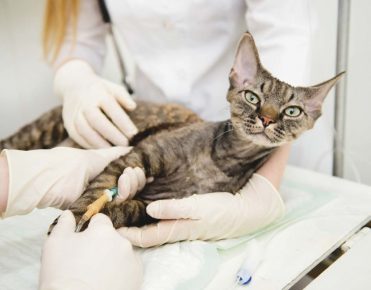
Calcivirosis requires long-term treatment with various means and drugs
The treatment regimen and dosage are selected by the attending veterinarian with taking into account the severity of the disease and the age of the patient. In any case, you should be prepared for complex therapy, since drugs from different groups are prescribed:
- antibiotics with a pronounced antiviral effect – Amoxiclav, Ceftriaxone or Bicilin;
- immunostimulants – veterinary Roncoleukin or “human” Cycloferon;
- topical antivirals – drops in Maxidin’s nose;
- supporting solutions administered intravenously – glucose, Ringer’s solution, vitamins (as the animal loses a lot of fluid during the period of the disease);
- folk remedies – chamomile tea, which relieves inflammation and stimulating the kidneys to remove toxins from the body.
The owner will need to not only give written out in a timely manner preparations, but also regularly rinse the nose and eyes, carry out sanitation the oral cavity, monitor the vitamin content in everyday pet diet.
A big plus if the owner of the animal can inject cat and / or connect the system to an intravenous catheter. Such manipulations performed in a familiar environment for animals will be more effective than spent in a hospital trip which is already a lot of stress for a pet.
When the first signs appear or if contact with sick cat is prescribed serum from blood plasma hyperimmunized animals Vitafel. Should not be practiced self-healing, starting from recommendations of Internet portals and forums. Combination of the treatment regimen is also not recommended. appointments from several veterinarians. Course duration varies from 14 to 24 days.
Possible complications
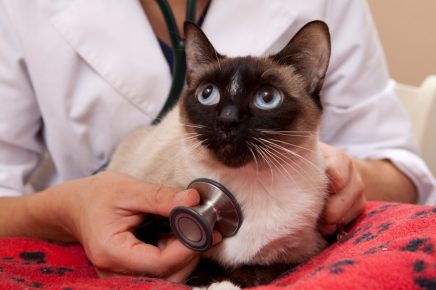
After treatment, it is necessary to carefully examine animal at the veterinarian for complications
After completing the full course of treatment, the pet acquires immunity to re-infection. Moreover, during months after complete cure this member of the family feline is a virus carrier dangerous for unvaccinated animals and kittens younger than a year. In two to three months, every second an ill individual retains the status of a virus carrier. Separate immunocompromised specimens may retain this status for the rest of your life.
Every third cat that has undergone calcivirosis throughout life may suffer from bronchitis or pneumonia due to weakened immunity. He may have cramps, increased irritability and even damage to certain departments brain. If the virus was picked up by calcivirus pregnant a cat, then it increases the risk of having kittens with different deviations or self-abortion.
In individuals with chronic calcivirosis, lifelong stomatitis and gingivitis. Relieve gum inflammation and prevent premature tooth loss in young kittens allows repeated the appointment of roncoleukin and reaferon every 3-4 months. This the measure, among other things, will protect against such possible complications, like glomerulonephritis and chronic renal failure.
Disease prevention

It’s always best to give this cat a shot at an early age.
The only effective prevention method in this case – the vaccine that the veterinarian will perform after advising the owner of the animal. When assigning a date vaccinations take into account the well-being of the pet in the last 1.5–2 weeks, appropriate training, etc.
These measures will allow you to “concentrate” the immune system on upcoming procedure and get the desired effect. Competently and on time vaccinated animals cope with the disease 100%. For unvaccinated animals, the risk of death is 15-30%, depending on timeliness of identification and appointment of adequate therapy.
Thus, feline viral calcivirosis is easier to prevent. observing the timing of vaccination than to treat. In addition to vaccination, it is necessary observe the rules of hygiene and disinfection of places of cat’s stay: litter, tray, bowls for food and water. Emergency veterinary help at the very beginning of the development of the disease increases the effectiveness and reduces the duration of treatment.






